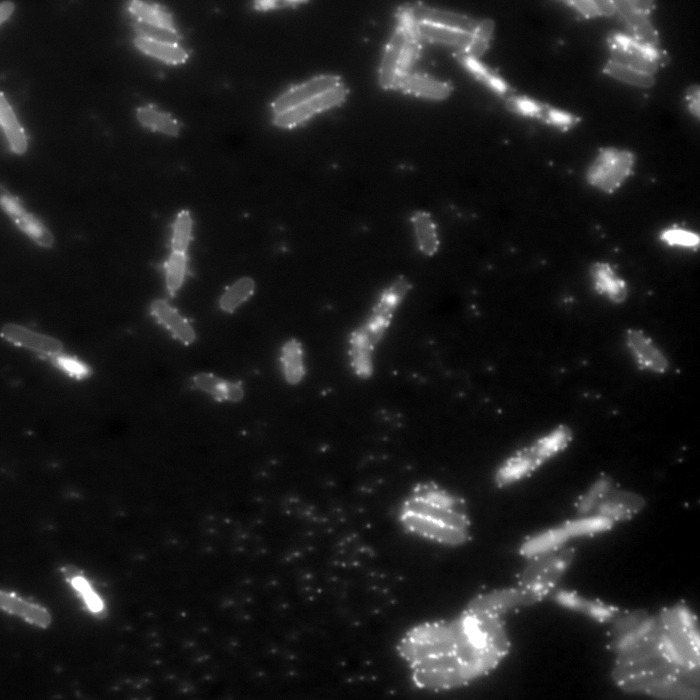
Publications
A complete list of publications can also be viewed at pubmed.
Two unrelated Pseudomonas phages use the exopolysaccharide Psl for infection
Amyx-Sherer, K., Awasthi, L.C., Zheng, A., Johannesman, A., LeRoux, M.*, Reichhardt, C.*
(2025) 11, Article number: 211 npj | biofilms and microbiomes. https://doi.org/10.1038/s41522-025-00841-4
*Co-corresponding
Acinetobacter phages use distinct strategies to breach the capsule barrier
McCalla, A.J., Walker, F.C., Bisaro, F., Rodriguez-Anavitate, M., Johannesman, A., Di Venanzio, G., Feldman, M.F.*, LeRoux, M.*
2025 PLOS Pathogens 21(9):e1013536. doi: 10.1371/journal.ppat.1013536.
*Co-corresponding
Phages carry orphan antitoxin-like enzymes to neutralize the DarTG1 toxin-antitoxin defense system
Johannesman, A., Awasthi, L.C., Carlson, N., LeRoux, M.
(2025) Nature Communications 16(1598).
Bacteria renew an OLD protein to cleave host tRNAs and block phage translation
A preview/summary of two recent phage defense papers: Burman et al. and Deep et al.
Gibbs, K. and LeRoux, M.
(2024) Cell Host and Microbe, 32(10), p 1639-1641.
Selected publications (prior to WashU)
The DarTG toxin-antitoxin system provides phage defence by ADP-ribosylating viral DNA.
LeRoux, M., Srikant, S., Teodoro, G.I.C,. Zhang, T., Littlehale, M.L., Doron, S., Badiee, M., Leung, A.K.L., Sorek, R., Laub, M.T.
(2022) Nature Microbiology, Jul;7(7):1028-1040. https://doi.org/10.1038/s41564-022-01153-5
Toxin-Antitoxin Systems as Phage Defense Elements.
LeRoux, M., Laub, M.T.
(2022) Annual Review of Microbiology. Apr 8. doi: 10.1146/annurev-micro-020722-013730.
Stress Can Induce Transcription of Toxin-Antitoxin Systems without Activating Toxin.
LeRoux, M., Culviner, P. H., Liu, Y. J., Littlehale, M. L., & Laub, M. T.
(2020). Molecular Cell, 79(2), 280-292.e8.
LeRoux, M., Peterson, S.B., Mougous, J.D.
(2015) Bacterial Danger Sensing. Journal of Molecular Biology. 427(23), 3744-53.
Diverse type VI secretion phospholipases are functionally plastic antibacterial effectors.
Russell, A. B., LeRoux, M., Hathazi, K., Agnello, D. M., Ishikawa, T., Wiggins, P. A., Wai, S.N., and Mougous, J.D.
(2013). Nature. 496(7446), 508-512.
LeRoux, M., Kirkpatrick, R.L., Montauti E.I., Peterson S.B., Harding B.N., Whitney, J.C., Russell A.B., Traxler, B., Goo, Y.A., Goodlett, D.R., Wiggins, P.A., and Mougous, J.D.
(2015) eLife. 4, e05701.
LeRoux, M., De Leon, J. A., Kuwada, N. J., Russell, A. B., Pinto-Santini, D., Hood, R. D., Agnello, D.M., Robertson, S.M., Wiggins, P.A., and Mougous, J.D.
(2012). Proceedings of the National Academy of Sciences, 109(48), 19804–19809.
Plasmodium falciparum biology: analysis of in vitro versus in vivo growth conditions.
LeRoux, M., Lakshmanan, V., & Daily, J. P.
(2009). Trends in parasitology, 25(10), 474–481.
Ingram, K. K., Krummey, S., & LeRoux, M.
(2009). BMC ecology, 9, 7.